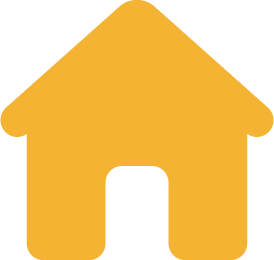Mavic Air 2 vs Mavic Pro 2
Is the Mavic Air 2 Better than the Mavic Pro 2?
With DJI’s release of the New Mavic Air 2, many drone pilots are asking: Is the Mavic Air 2 better than the Mavic Pro 2? Well there’s really no right or wrong answer since both drones can be used for far different purposes. Overall, the more capable drone is still the Mavic Pro 2 since it has a better image quality and pristine video capabilities touting 10-bit color. Let’s take a look at the specs of each, that way we can further identify each use when out in the field
Mavic Air 2 Quick Specs
Weight: 570g
Size: 180x97x84 mm
Video: 4K/60fps and 120 Mbps
Camera: 1/2” CMOS, 12MP and 48MP
Flight Time: 34 Minutes
Price: $799 + Tax
Mavic Air 2 First Thoughts
The Mavic Air 2 packs a punch given its small relative size. Let’s unpack some of the new advertised details about this drone:
Lightweight
Weighing in at 570g total, it is almost half the weight as the Mavic Pro 2. The controller has an interesting new design choice as well now that it’s larger and mounts your phone/screen above the joysticks rather than below. Smaller drone, larger controller seemed counter-intuitive to me when DJI advertises the portability of the setup.
Sensor Size
Do not let the 48MP 1/2” sensor fool you, it’s still a much smaller sensor than the Mavic Pro 2 which means it will capture less light. Low light conditions will still be challenging to capture with the Mavic Air 2!
8K Aerial Hyperlapse
The one standout incredible thing about this drone is that you can shoot 8K hyperlapse, which beats out the Mavic Pro 2’s ability to shoot hyperlapse at about 5.5K. If anything, this 8K hyperlapse feature should be a huge indicator that DJI may release a Mavic Pro 3 that is also capable of shooting 8K hyperlapses.
Smart Photo
While this is great for beginners, keep in mind that this method can be achieved manually shooting in AEB Mode (Auto Exposure Bracketing) and stacked in Lightroom during post-production. Check out this article for a complete editing guide! Considering the Mavic Pro 2 will have less noise with it’s larger sensor, the image quality will overall be better.
4K/60fps Capabilities
An impressive new spec that was not available on the Mavic Pro 2, the higher 4K framerate is ideal for capturing action sports and wildlife. At lower video resolutions, you can shoot up to 240fps which allows for super slow motion. A very specific usecase, most of the footage found on Framework Films is already slow enough at 24fps, so there may not be an immediate need to slow your footage down further.
HDR Video
If you plan to color grade your footage in post-production like in Final Cut, Premiere, or Davinci, HDR doesn’t really help. It’s always better to shoot in a flat color profile than to shoot HDR video since your Computer has stronger GPU and color rendering software than any drone anywhere. Shoot flat like in D-Cinelike or D-Log and it’ll be better for your footage in the long run!
Flight Time
Extended battery charge and less weight allows the Mavic Air 2 to fly for an impressive 34 minutes! This is 3 minutes longer than the advertised flight time of the Mavic Pro 2!
OcuSync2.0
OcuSync2.0 features an impressive 10KM range with extended Full HD Video transmission during your flight, beating the Mavic Pro 2! The Mavic Pro 2 can only extend out to 8KM. Though that shouldn’t matter since it is usually illegal to fly without a consistent line of sight on your UAV drone.
Please keep in mind
The Video transmission you see on your phone (FPV) and the control telemetry are two different RF (radio frequency) signals which explains why the controllers have two antenna. Since the FPV transmission requires more data transmission and operates at higher frequency, your FPV feed gets cut off before you lose telemetry control. When your vision cuts out, you’re still able to move the aircraft back towards your home point, or up to improve signal transmission. the 10KM range refers to telemetry control, though the FPV video feed is improved as well.
Updated Software
Spotlight 2.0, ActiveTrack 3.0, Point of Interest 3.0 are all upgrades to improve your flight experience and grant beginners easy programmed functions to create impressive visuals. These are all great features if you’re just starting out or an aspiring UAS pilot! Keep in mind though, these are software-based and these updates could very easily be rolled out to a Mavic Pro 3 anyway.
Automatic Obstacle Avoidance
This appears to be based on a software update. Keep in mind the Mavic Air 2 only has frontward, backward, and downward sensors for obstacle avoidance. The Mavic Pro 2 has forward, backward, sideward, upward, and downward sensors. This is important when considering overall obstacle avoidance capabilities and how your drone performs near objects.
Mavic Pro 2 Specs
Weight: 907g
Size: 214x91x84mm
Video: 4K/30fps at 100 Mbps
Camera: 1” CMOS, 20MP
Flight Time: 31 Minutes
Price: $1599 + Tax
Which should you buy?
If you are a beginner, this is a really great option to start out with! If all you want to do is shoot aerial hyperlapses and you cannot wait for the release of the eventual / inevitable Mavic Pro 3, this is a great option to start shooting Aerial hyperlapses!
If you already own a Mavic Pro 2 or Zoom, it doesn’t make sense to shell out for the Mavic Air 2 unless money is of no object! I personally will wait for the Mavic Pro 3 before I abandon my Mavic Pro 2, the updated tech on the Mavic Air 2 is not enough to switch away from the Pro line.
If you enjoyed this article, feel free to check out our Aerial and Timelapse YouTube Channel!

